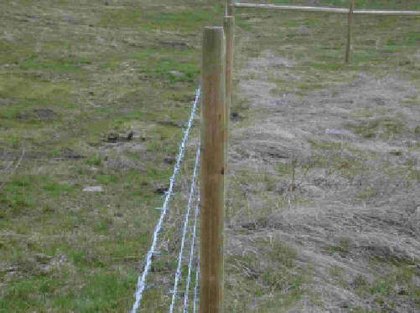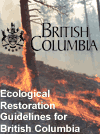
Assessing
your site
This
section gives a step-wise list of actions needed to understand the
restoration needs at your site. These steps are similar to those
developed by the Society for Ecological Restoration, and more information
can be found on their web site (www.ser.org).
Identifying
Boundaries and Land Ownership
Once
you've chosen your restoration site, the next step is to identify
its boundaries and determine private land ownership and/or Crown
land tenures. For BC, land title and resource tenure information
can be obtained through the Land
and Resource Registries Portal, a project of the Ministry of
Sustainable Resource Management. Alternatively, your local Ministry
of Forests office may be able to provide information on Crown forest
or rangeland tenures, special management zones, and resource management
plans. If you are close to a town, your area will probably encompass
a mix of land titles, and you may need to do a land title search
with the help of the Land Title Office.
If
your site is on private land, your restoration goals may still be
possible if they meet the needs of the landowner. Options for conservation
covenants (i.e., modifications to the land title for conservation
goals) exist and should be explored with groups like Nature
Conservancy of Canada or The
Land Conservancy (see Resources
section). Land trusts like these often work with private landowners
to manage for ecological goals, and restoration can be part of their
land management plans.
Identifying
Causes of Damage
Identifying
and understanding what caused the ecosystem damage will assist in
developing restoration goals and prescriptions. The most effective
restoration projects are those that simply remove the degrading
agents to allow for ecosystem recovery. For example,
fencing off a wetland or grassland from cows will allow for at least
partial ecosystem recovery. Restoring natural flows to a wetland
or stream by removing a dam or diversion is another example of addressing
the cause of ecosystem damage. It is important to identify the reasons
why the site is degraded, and ensure that these causes are addressed
before much time and money is spent.

Tanis Douglas
The area to the right of the fence line
has been protected from grazing for one year. Note the difference
in the grass community between the protected area, and outside.
Causes
of damage are not always obvious, and it may be unclear what the
site was like before it was degraded. In these cases, expert opinions
from government agency staff or experienced consultants may be needed.
Information from local individuals or government on previous land
uses may also help explain the current disturbed condition. Alternatively,
historical research may provide some clues (see 'Using
Historical Reference Conditions as Templates').
Setting
Goals and Objectives
Successful
restoration projects require that the effects are measurable, hence
goals and objectives must be explicitly defined, something that
will be possible only following a site assessment. At this stage,
preliminary, qualitative goals should be set to provide a basis
for further investigation. During the assessment phase, preliminary
goals and objectives are refined as more information is gathered
and options are assessed. (See the previous discussion on Defining
Restoration Goals and Objectives.)
|







